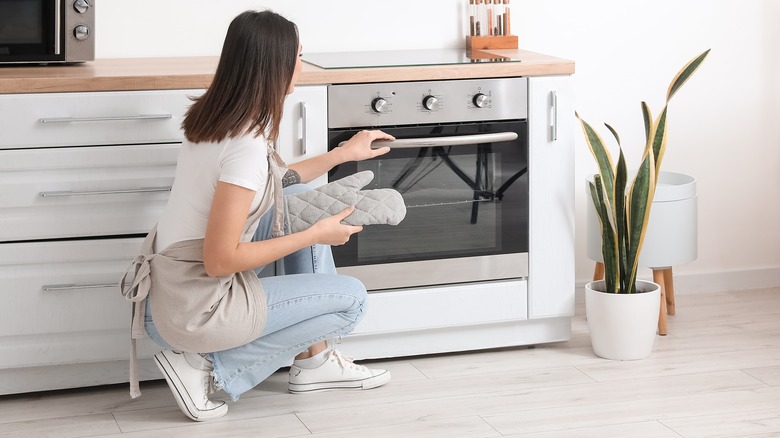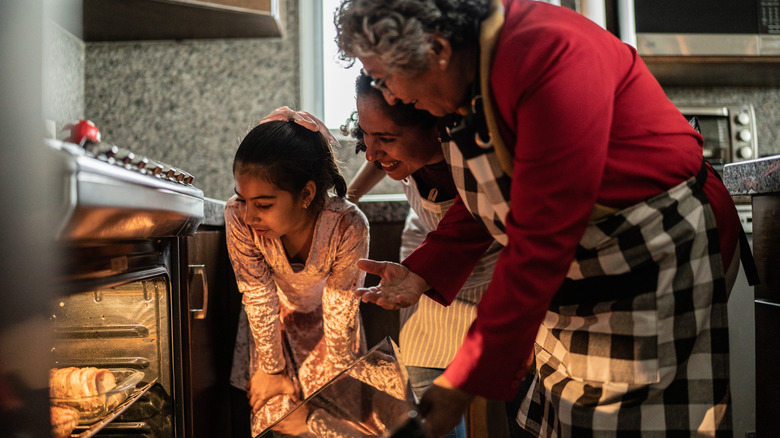Why It's Crucial To Preheat An Electric Oven Longer Than A Gas One
Choose just about any baking recipe, and you'll always come across the same essential first step: "Preheat the oven." But, depending on what kind of oven you have, there's a pretty big difference in preheating time from one to another. The difference hinges on whether your oven uses electricity or gas.
To start, electric ovens demand a longer preheating time compared to their gas counterparts. This stems from the fact that electric ovens rely on heating elements, such as heating coils, which need time to heat up. Gas ovens, on the other hand, use burners that offer near-instant heat when ignited. Because of this, it'll usually take twice as long (or even longer) to preheat an electric oven compared to a gas oven.
How does one know when the oven is preheated and ready to go? Try an oven thermometer. Oven dials aren't very precise, so it's best not to rely on them or the pre-heat light when baking something finicky. An oven thermometer is a gauge-like device that allows you to get an exact read on the internal temperature of your oven. Simply place it on the oven rack and observe the needle through the viewing window in the oven door. When the needle aligns with the correct temperature, consider it your cue to begin cooking!
The reason why you should wait the extra time
Waiting 15 to 20 minutes for your oven to preheat might seem like a chore, however, there are good reasons why you should stick it out. Preheating your oven actually plays a crucial role in ensuring the quality of your final dish and, believe it or not, it impacts food safety as well. First off, placing food into a cold oven poses a higher risk of uneven cooking. If you try to compensate for skipping the pre-heating time, you might undercook or overcook your dish, resulting in undesirable textures and consistencies.
For instance, pies and desserts may end up with dried-out, tough crusts instead of the soft texture you were probably aiming for. Baked recipes might even become burnt. Most recipes are carefully crafted with the preheating time in mind, so skipping this step can throw off the timing and increase the likelihood of your meal turning out less than perfect.
There are also food safety concerns to take into account. The USDA warns about avoiding the "danger zone," which falls between 40 and 140 F. This is a temperature range where harmful microbes multiply rapidly. Even brief exposure to the danger zone can lead to bacterial growth, especially when your food has been sitting at room temperature during preparation. So, by preheating your oven, you'll be able to minimize your food's time in the danger zone, reducing the risk of contamination.

